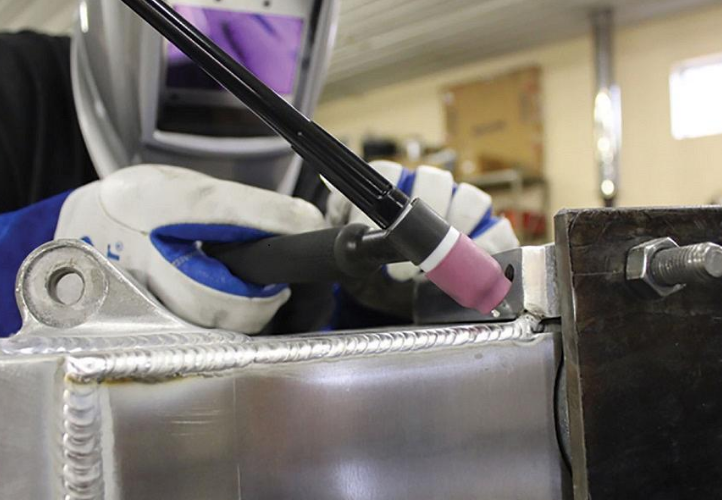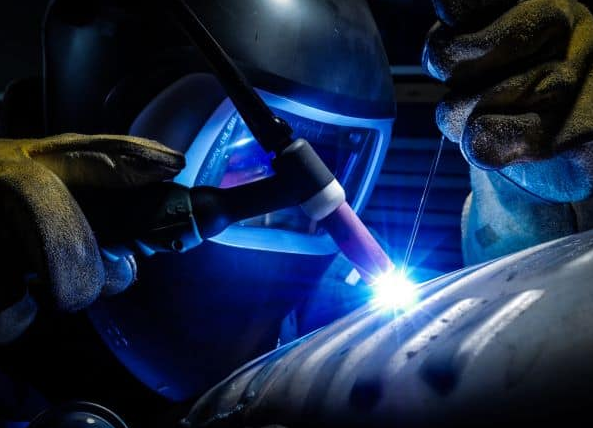Overview of Shielding Gases
Shielding gases play a crucial role in welding processes. These gases serve to protect the weld area from atmospheric gases such as oxygen, nitrogen, and water vapor. This protection is essential to prevent oxidation and other forms of contamination that can weaken the weld.
Definition and Purpose of Shielding Gases
Shielding gases are inert or semi-inert gases used in various welding processes, including Tungsten Inert Gas (TIG) and Metal Inert Gas (MIG) welding. Their primary purpose is to protect the weld pool from atmospheric contamination. They also influence the arc characteristics and the overall quality of the weld. For example, argon, a common shielding gas, helps in stabilizing the welding arc and provides a cleaner weld pool.

Comparison of Shielding Gases in Welding
Different shielding gases offer varied benefits and are suitable for specific types of metals and welding techniques. For instance, argon provides excellent arc stability and is ideal for welding non-ferrous metals like aluminum. Helium, often mixed with argon, increases the heat input and is beneficial for thicker materials. On the other hand, carbon dioxide is a cost-effective option often used in MIG welding but can lead to a more spattered weld. The choice of gas often depends on factors like the material being welded, the desired weld properties, and cost considerations.
Shielding Gases in TIG Welding
TIG (Tungsten Inert Gas) welding, known for its precision and high-quality finishes, relies heavily on the use of appropriate shielding gases. These gases not only protect the weld area from contaminants but also play a significant role in the weld’s appearance, quality, and structural integrity.
Common Gases Used in TIG Welding
In TIG welding, argon is the most commonly used shielding gas. Its popularity stems from its ability to provide a stable arc and minimal weld contamination. For welding materials like stainless steel or aluminum, pure argon is often the go-to choice. In some cases, welders may use mixtures of argon with other gases like helium. Helium, when added, increases the heat input and welding speed, making it suitable for thicker materials.
Factors Influencing Gas Selection for TIG Welding
Several factors determine the choice of shielding gas in TIG welding. The type of material being welded is the primary consideration. For instance, aluminum and non-ferrous metals generally pair well with argon due to its inert properties. The thickness of the material also influences gas selection; thicker materials may require a helium-argon mix for deeper penetration. Furthermore, the desired weld characteristics, such as bead profile and color, are also crucial factors. Lastly, cost and availability can affect the choice, as gases like helium tend to be more expensive than argon.
Shielding Gases in MIG Welding
MIG (Metal Inert Gas) welding, a versatile and widely used welding process, demands careful selection of shielding gases. These gases ensure a stable arc and quality weld by protecting the molten weld pool from atmospheric contamination.
Typical Gases Used in MIG Welding
Carbon dioxide is a common and cost-effective shielding gas in MIG welding. It provides deep penetration, but can lead to increased spatter. Argon is another popular choice, known for its cleaner welds and smoother arc. Often, mixtures of argon with carbon dioxide or oxygen are used to balance weld quality with cost-efficiency. These mixtures can improve arc stability and reduce spatter, enhancing the overall quality of the weld.
Considerations for Choosing MIG Welding Gases
Selecting the right shielding gas for MIG welding involves several considerations. The type of material being welded is crucial; for instance, steel often pairs well with a mixture of argon and carbon dioxide. The thickness of the material also influences gas choice, with thicker materials requiring gases that provide deeper penetration. Welding position matters too; some gases are better suited for overhead or vertical welding. Additionally, the desired weld properties, such as bead appearance and mechanical strength, are key factors. Finally, cost and availability often play a role in the selection process, as some gases might be more readily available or budget-friendly than others.
Properties of Shielding Gases
Shielding gases in welding not only protect the weld area from atmospheric gases but also significantly influence the welding process’s characteristics. Each gas or gas mixture brings unique properties that affect both the welding process and the final weld.
Chemical and Physical Properties
Common shielding gases like argon and helium are inert, meaning they do not react chemically with the weld pool. Argon, for instance, is known for its density and ability to provide good coverage over the weld pool, which helps in achieving a stable arc and minimizing spatter. Helium, lighter than air, provides higher heat input, which is beneficial for welding thicker materials. Carbon dioxide, although not inert, is widely used for its deep penetration qualities and cost-effectiveness, despite the potential for increased spatter.
Impact on Weld Quality and Efficiency
The choice of shielding gas greatly impacts weld quality and efficiency. For example, using argon in TIG welding results in high-quality, clean welds with minimal spatter, making it ideal for thin materials and precise applications. In MIG welding, mixing argon with carbon dioxide can balance weld quality and cost, offering good penetration with less spatter. Helium mixtures, due to their higher heat input, increase welding speed, beneficial for productivity but may require greater skill to manage.
Safety and Handling of Welding Gases
Proper safety measures and handling procedures are crucial when dealing with welding gases. These precautions are essential to prevent accidents and ensure a safe working environment.
Safety Precautions for Handling Gases
When handling welding gases, always use appropriate personal protective equipment (PPE), such as gloves and safety glasses. Ensure that gas cylinders are always secured upright to prevent them from falling over. Regularly check for leaks using a soap solution; never use a flame to detect gas leaks. Also, keep cylinders away from heat sources, as high temperatures can increase the pressure inside the cylinder, posing a risk of explosion. It’s important to use the correct regulator for each type of gas and to open cylinder valves slowly to prevent pressure surges.

Storage and Disposal Guidelines
Store gas cylinders in a well-ventilated, dry area away from combustible materials. Separate oxygen cylinders from flammable gases by at least 20 feet or with a non-combustible barrier. For disposal, never attempt to refill single-use cylinders or dispose of them in general waste. Instead, follow local regulations for hazardous waste disposal. Empty cylinders should have their valves removed and be marked as empty to ensure they are not accidentally used.
Advancements and Alternatives in Shielding Gases
The field of welding continues to evolve, with significant advancements and alternatives in shielding gases enhancing both efficiency and environmental sustainability.
Recent Developments in Shielding Gas Technology
Recent developments in shielding gas technology focus on optimizing weld quality and reducing environmental impact. Gas manufacturers are experimenting with new mixtures that offer better control over the welding arc, improved penetration, and higher quality welds. For instance, mixtures that reduce ozone formation during welding are gaining attention. Additionally, there is ongoing research into gases that can provide faster welding speeds without compromising weld integrity, directly impacting productivity and cost-effectiveness.
Alternative Shielding Gases and Their Applications
Exploration of alternative shielding gases centers on finding more environmentally friendly and cost-effective solutions. For example, hydrogen mixes are emerging as alternatives, especially in high-speed welding applications. These mixes can increase weld speed and improve weld quality in certain materials. Another area of exploration is the use of noble gas mixtures, which aim to reduce the overall cost of welding gases while maintaining or improving weld quality. These alternatives are not only beneficial in terms of cost but also contribute to a lower environmental footprint.
For more detailed information on the latest trends and research in shielding gas technology, you might find resources on welding industry websites or academic publications in the field of material science. They offer insights into how these advancements and alternatives are shaping the future of welding.


